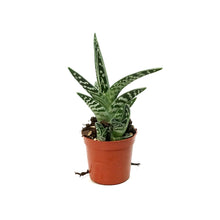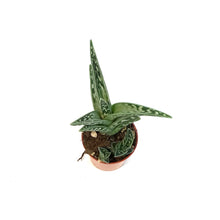Secure and trusted checkout with
The Tiger Jaws is a beautiful species of succulents with large, thick leaves of many different shapes and colours. The leaves are toothed and the growing pattern makes this plant look like jaws
If you need any more photos or additional information on this product, send us a message using the chat button on our website with the product name, and we will get back to you as soon as possible.
This plant has a representative product photo and the item you will receive may not be exactly as shown.
Attributes
Type: Houseplant, SucculentHeight: 6in - 12in
Spread: 6in - 12in
Light: Full Sun - Bright, Indirect Light
Water: Light
Zone: 8-10
Pet Safe: Toxic
Care
General Maintenance: Repot your Kalanchoe every year into a pot that is 1 size larger. Propagate through either stem cuttings that have been allowed to callous over for at least 24 hours, or through division of offshootsTemperature: These plants love hot temperatures, and will thrive in the household climates. They can tolerate temperatures as low as 15 degrees Celsius, and as high as 34 degrees Celsius. Do not expose to frost or freezing conditions
Light: These plants require a lot of light to grow properly. A minimum of 6 hours of full sun in a day will have them happy, or as much bright direct sunlight as possible. They can tolerate direct sunlight for long periods of time, though take care to watch for burning of the leaves. If this occurs, take out of direct sunlight into indirect sunlight
Watering: Succulents of any variety have thick, water-retaining leaves so they rarely need watering. These plants have roots that are very sensitive to rotting, so it is best to allow at minimum the top 2 inches of soil to dry between watering. Ideally 50% of the soil should be dry before watering any succulents
Soil: These plants enjoy most potting soil mixes so long as they have excellent drainage. Mixing in Perlite/Vermiculite or other gritty, drainage improving inorganic materials is a great way to improve your soil quality
Fertilizer: Kalanchoe rarely need fertilization, but will benefit from feedings once every 3-4 weeks during the growing season (April to August)
| SKU | Inventory |
| Item () | 1 in stock. |






